Blog
Blog

By Arliegh Boswell
•
19 Nov, 2022
Lawn mulching and mowing are two crucial lawn care tasks that often go hand-in-hand. Lawn mulching helps your lawn by preventing weeds, retaining moisture, and providing nutrients to the soil. Mowing your lawn regularly helps it look its best and promotes healthy growth. While both of these tasks are important, they can also be time-consuming. Fortunately, you can follow a few smart tips to make lawn mulching and mowing more efficient. This blog post will share four of our top tips to help you get the most out of your lawn care routine. Remove The Debris Completely Assuming you have mowed your lawn, you will want to remove any remaining debris before mulching. This will ensure that your mulch is as effective as possible and doesn't get clogged with grass clippings or other lawn debris. One way to remove debris is to use a leaf blower. It is a quick and easy way to get rid of any light debris that may be on your lawn. If you have heavier debris, such as sticks or stones, you may need to use a rake or shovel to remove them by hand. Once you have removed all the debris from your lawn, you are ready to start mulching! Never Mow After The Rains After a rainfall, it's best to wait until the lawn has dried before mowing. If you must mow while the grass is still wet, be sure to use a sharp blade to avoid tearing the grass. Mowing wet grass can cause clumping and leave behind unsightly tire marks. The main reason not to mow after it rains is that the ground is too wet and soft. This can cause your lawn mower to sink into the ground, damaging both your lawn mower and your lawn. Additionally, wet grass clippings can clog up your lawn mower and make it less effective. Seek Professional Guidance For Mulching Mulching is essential to lawn care, but it can be tricky to do it right. A lawn care specialist can help you choose the right mulch for your lawn and apply it correctly. If you're unsure how to mulch your lawn effectively, it's best to seek professional guidance. Mulching is beneficial for your lawn because it helps retain moisture, prevents weeds from taking root, and provides nutrients for the grass. However, if you don't apply mulch correctly, it can do more harm than good. For example, using too much mulch can suffocate the grass and lead to disease. When in doubt, always consult a professional before mulching your lawn. A little extra help now can save you a lot of time and effort down the road. Mulch Leaves Into Soil Mulching leaves into the soil is an excellent way to add organic matter and improve the health of your garden. Here are some benefits of mulching leaves into the soil: 1. Mulching leaves improve the structure of the soil, making it more porous and aerated. It allows roots to grow more easily through the soil, resulting in a healthier plant. 2. Mulched leaves help retain moisture in the soil, keeping plants hydrated during periods of drought. 3. Leaves contain many essential nutrients that plants need for growth, such as nitrogen, phosphorus, and potassium. By mulching them into the soil, you provide a natural fertilizer for your plants. 4. Leaves also provide a protective layer over the soil surface, preventing erosion and runoff during heavy rains. They also help insulate the ground from extreme temperatures, keeping roots cooler in summer and warmer in winter. Conclusion Mowing and mulching your lawn may seem like a chore, but it's an essential part of keeping your yard healthy. By following these smart tips, you can make the most of your mowing and mulching routine and ensure that your lawn is looking its best.
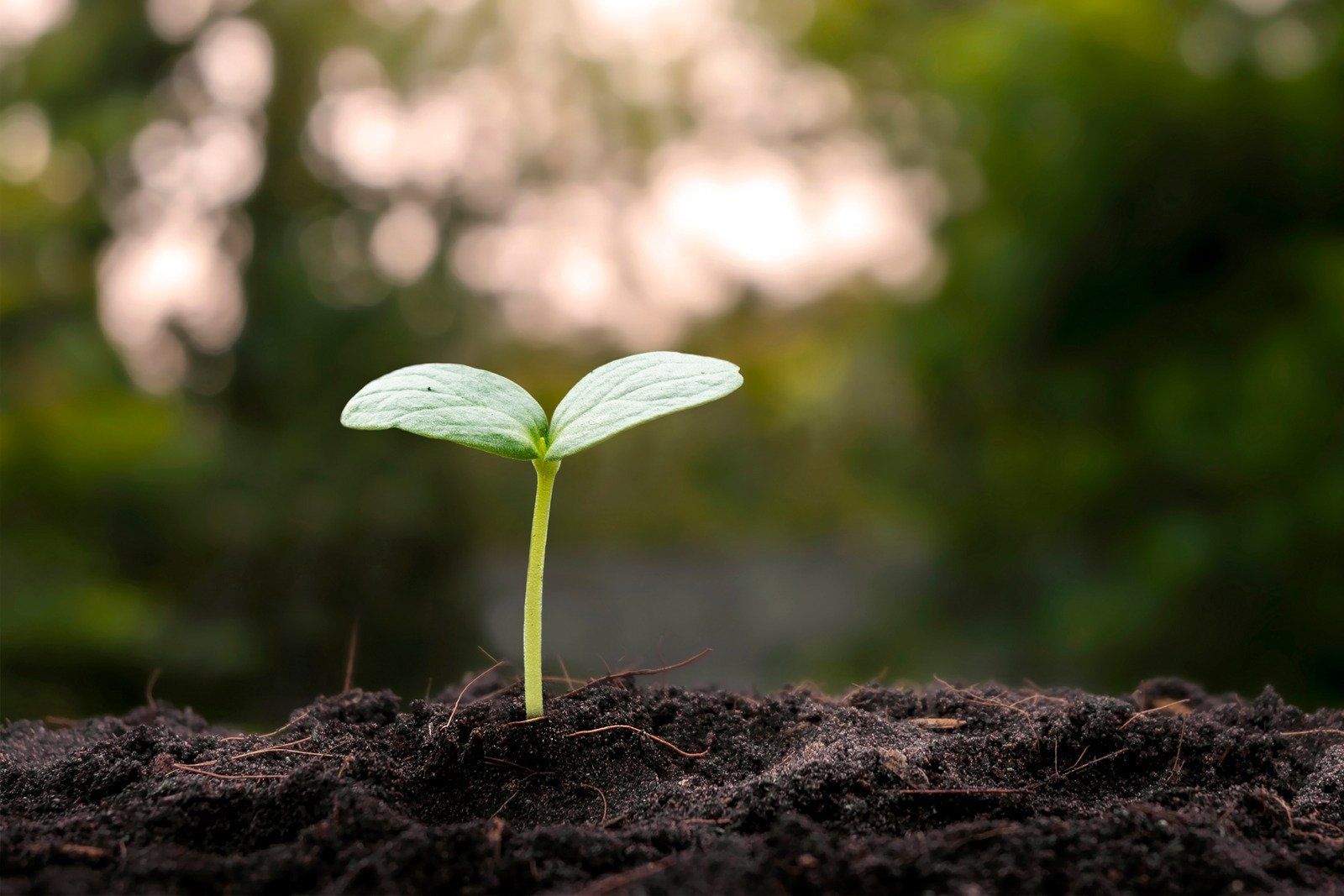
By Arliegh Boswell
•
25 Oct, 2022
Soil is one of the most critical factors in agriculture. It rules out weeds, and other harmful plants, helps maintain soil pH balance, moderates the temperature inside your garden bed, and accounts for about half of your country's freshwater table. But even though we know a lot about soil, we don't always understand everything about it. This article will explain the different types of soil, their characteristics, and their roles in agriculture.

By Arliegh Boswell
•
30 Sep, 2022
Valdosta, Georgia, is a city known for its Southern charm and hospitality. But there's one thing that the city doesn't take lightly - safety. Demolition is a hazardous and strenuous task that professionals should only handle. If you're living in Georgia and need a demolition company, choose one that follows safety protocols and produces high-quality work. Let's discuss what you must look for when choosing a demolition company.
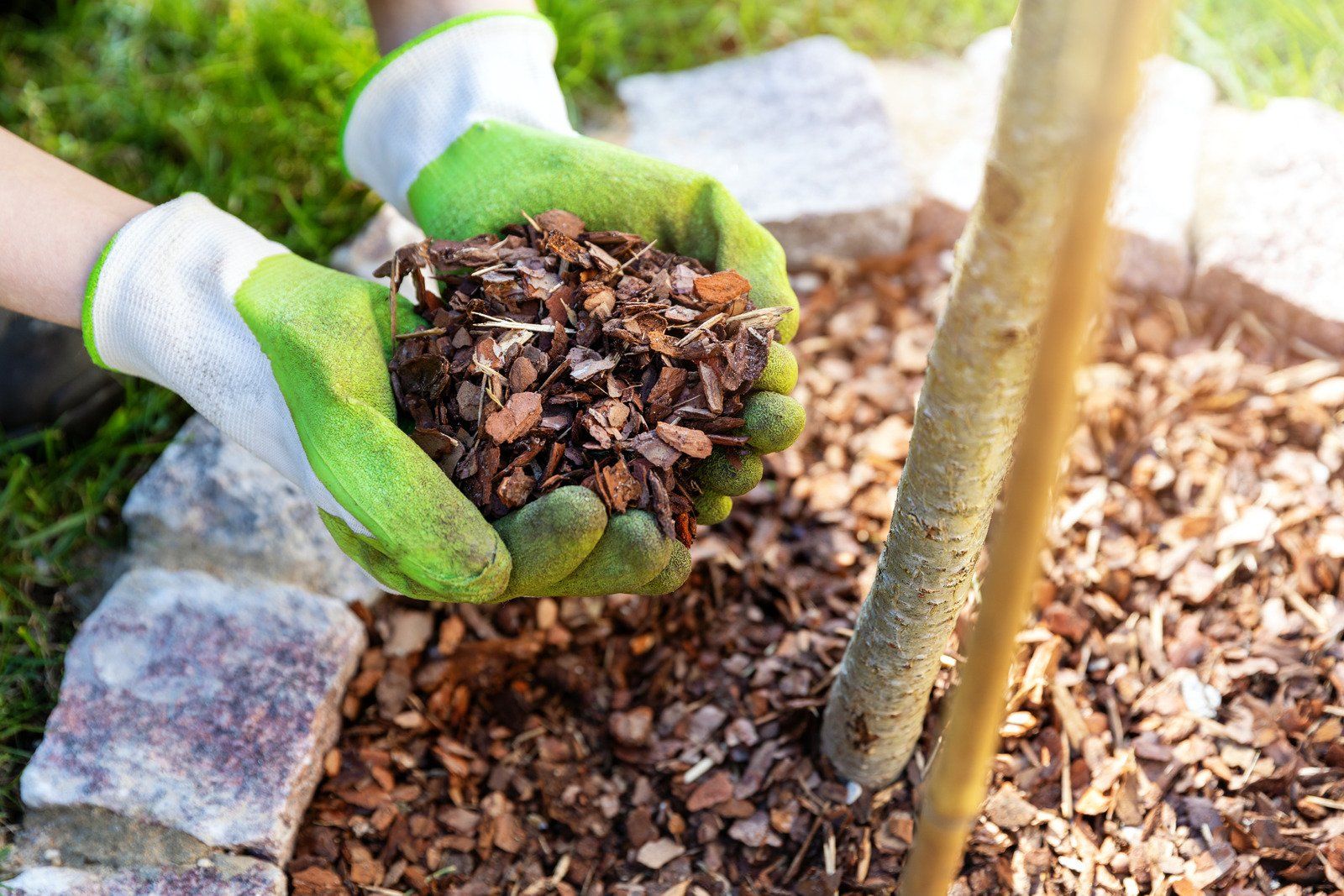
By Arliegh Boswell
•
20 Aug, 2022
Mulching is an essential part of gardening. It helps to protect plants from the elements, regulate soil temperature, and suppress weed growth. There are many different types of mulch that you can use in your garden, but not all of them will work well for every situation. In this blog post, we will discuss the different types of mulches and help you choose the one that is best for your garden! Different Types of Mulches Organic Mulches Organic mulches are made from natural materials such as leaves, grass clippings, straw, and wood chips. They help improve the soil quality by adding nutrients and improving drainage. They also help to control weeds and keep the soil moist. Types of Organic Mulches: Leaves: Autumn leaves are an excellent, free source of mulch. Simply rake them up and spread them around your flower beds. Be sure to shred the leaves first, as whole leaves can mat down and prevent water and air from reaching your plants' roots. Straw: Straw is an ideal mulch for preventing weeds and retaining moisture in the soil. It's also a great insulator, making it suitable for protecting tender plants from frost damage. Wood Chips: Wood chips make an excellent mulch for pathways and garden beds. They break down slowly, so they'll last for several years. Be sure to choose chips that are free of chemicals and herbicides. Compost: Compost is suitable as a mulch for vegetable gardens and flower beds. It enriches the soil as it breaks down, and it also helps to suppress weeds. Pine Needles: Pine needles are great for acid-loving plants, such as rhododendrons and azaleas. Be sure to use fresh pine needles, as older ones can be acidic. Grass Clippings: Grass clippings are a great way to mulch your garden. They are free, do not attract pests, and break down quickly, adding nutrients to the soil. Be sure to use fresh clippings, as older ones can contain weed seeds. Shredded Bark: Shredded bark is a popular choice for mulching flower beds. It's attractive, lasts for several years, and helps to suppress weeds. Be sure to choose bark that is free of chemicals and herbicides. Newspaper: A newspaper is an inexpensive way to mulch your garden. Simply lay it down and cover it with another layer of mulch. Be sure to use black-and-white newspapers, as colored ones can contain harmful chemicals. Inorganic Mulches Inorganic mulches are made from materials such as plastic, stones, and rubber. They don't provide nutrients to the soil but can help with moisture retention and weed prevention as they don't decompose easily. Types of Inorganic Mulches: Plastic Sheeting: Black plastic is often used to kill weeds and grasses beneath it. It also helps to warm the soil in cold climates. Landscape fabrics: Woven landscape fabrics allow water and air to reach the soil while blocking sunlight from reaching weed seeds. This type of mulch is often used in professional landscapes. Gravel and Stone: Decorative stones can be used as mulch in gardens. They last longer and need minimal maintenance. The Bottom Mulches can be applied around trees, shrubs, and other plants to help them thrive. They should be applied at a depth of two to four inches. There are many types of mulches available, so it's important to choose the right one for your needs. Be sure to consider your climate, soil type, and plant type when selecting mulch. With a little research, you can find the perfect mulch for your garden. For professional assistance , get in touch with Environmental Audit & Assessment Inc, where you can avail mulching and mowing services.

By Arliegh Boswell
•
16 Jul, 2022
For those who are new to the land clearing process, we are here with some of the vital things that must be considered before the process.
Whether clearing real estate land or constructing a residential building, land clearance is one of the imperative processes, to begin with. There are plenty of things that must be thoroughly checked and decided before clearing the land for good.
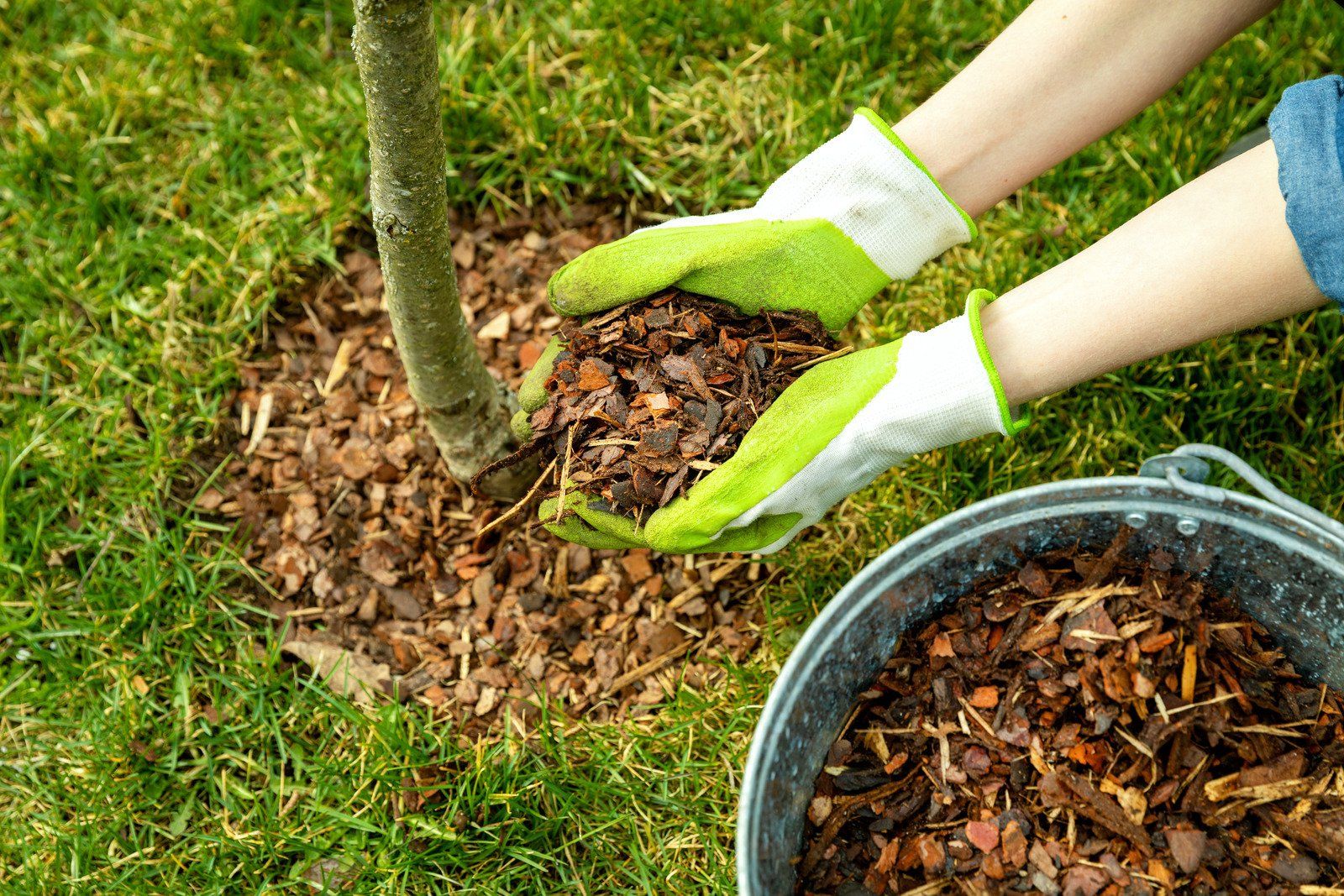
By Arliegh Boswell
•
12 Jun, 2022
Mulch is a thick material layer covering the soil surface and around plants. It can include fallen leaves, plant debris, straw, compost, wood chips, seaweed, cardboard, and rotted manure. Proper mulching gives a polished appearance and a finishing look to the garden, and creates a better growing environment for trees, plants, shrubs, and flower beds. Experts often recommend two to three inches of mulch for most landscapes. Importance of Mulching There are several reasons to consider mulching. Mulch provides various benefits, including: Reduce weed growth Maintain soil moisture Reduce erosion and soil compaction Protect plants from unfavorable winter conditions Enhance soil health Repel ticks, fleas, and gnats Moderate soil temperature Why Replace Mulch? For mulch to stay effective, it needs regular replacement. Understanding when to replace mulch will keep the plants healthy and maximize the mulching benefits. Mulch decomposes after a particular time, and if not replaced, the soil will stop receiving the nutrients. The decomposed mulch also loses its consistency, fails to perform its desired function, and increases the problems of soil erosion and weeds. Several people use mulch for aesthetic reasons. But eventually, as mulch ages, it loses its color and visual appeal, making replacement a necessity. How Often Should You Replace Mulch? According to professionals, the frequency of mulch replacement usually depends on the type, size, and quality of mulch, soil conditions, sun exposure, and weather conditions. Usually, it is recommended to replace mulch after one or two years. Certain factors like frequent heavy rains or high foot traffic may decompose the mulch quickly and demand periodic mulch application throughout the year to ensure proper coverage. Some mulch lasts longer than others. Size is an essential factor that decides how long mulch will last. For example, bark has a longer lifespan than wood chips, and as shredded mulch is vulnerable to being washed away by rain and winds, it requires frequent replacement than other mulches. The color of the mulch also plays a critical role in deciding how often to replace the mulch. A few undyed mulches may lose their color and turn gray after some time. Although it doesn’t reduce their effectiveness, you may consider replacing them for aesthetic reasons. Dyed mulches may retain the color for a long time, ensuring it is not dyed using cheap materials. Low-quality mulches can impact the soil negatively. Before purchasing dyed mulches, ensure that the ingredients used are not cheap and understand the impact of dye penetration on the soil. Keep the depth to 2-3 inches when replacing or adding new mulch to the landscape. Before replacing mulch, evaluate the condition of the current mulch and look for mold, pests, and other issues to see if it requires complete replacement. Consider removing old mulch, if necessary, or level it using a rake before adding a new layer. Leveling existing mulch allows it to keep adding nutrients to the soil and saves time and effort needed to remove the old mulch. Most gardeners mulch during spring. However, mulching during late fall or early winter prepares the plants for harsh cold weather. It winterizes the garden, prevents frost bites, and prepares the soil for healthy growth during spring. Contact a local mulching company if you need help mulching your landscape. Pros ensure to use the highest quality mulch to get the best benefits and keep the garden healthy and thriving.
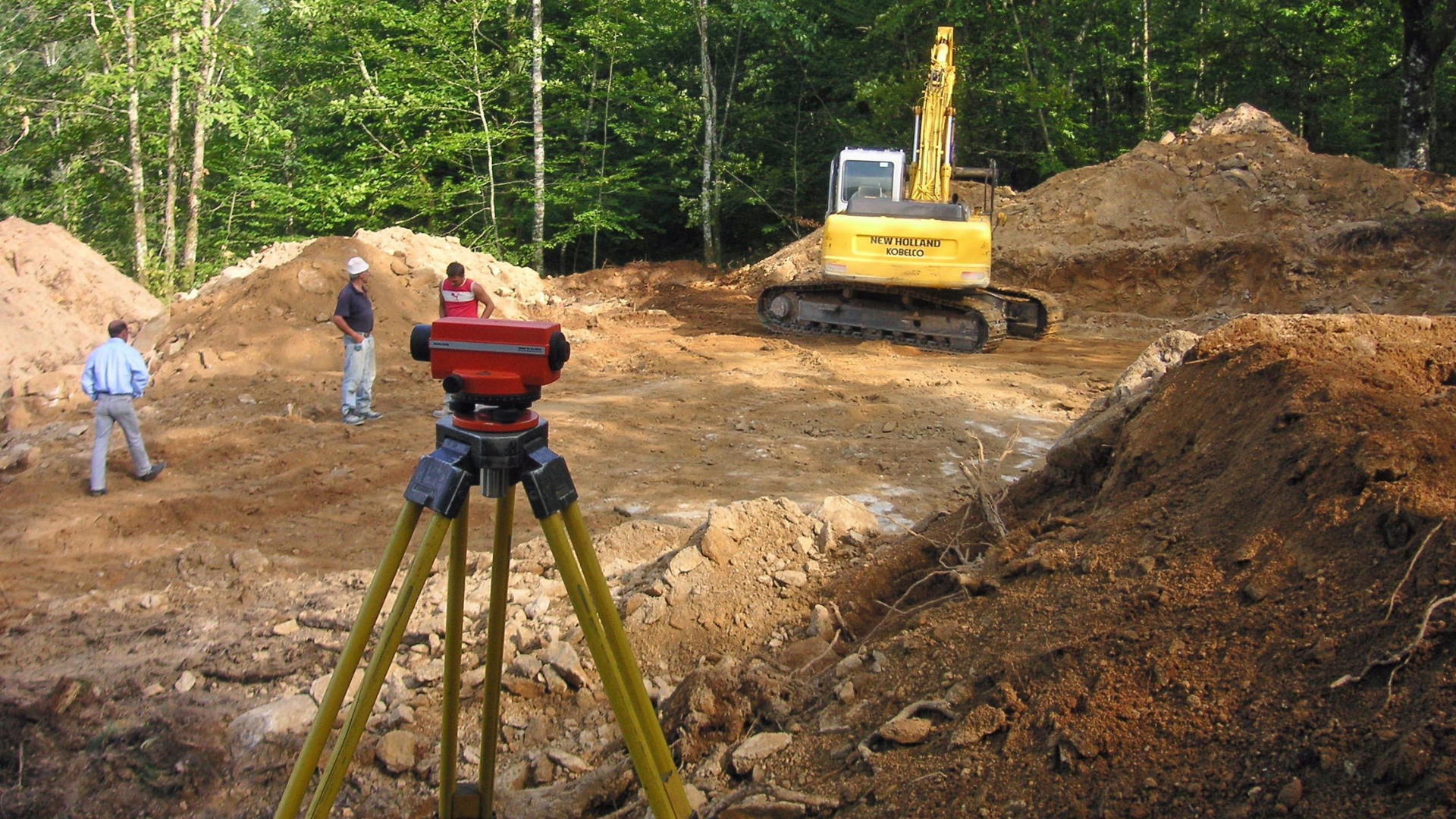
By Arliegh Boswell
•
21 May, 2022
Several factors require consideration when investing in commercial real estate. The buyers need to properly research and do due diligence before closing any deal. One of these factors that no commercial property buyer should ignore is ESA or Environmental site assessment. Purchasing a commercial property is not a small thing. It needs investing thousands or millions of dollars, and the buyer needs to limit his liability and ensure that he makes no mistakes during the process.
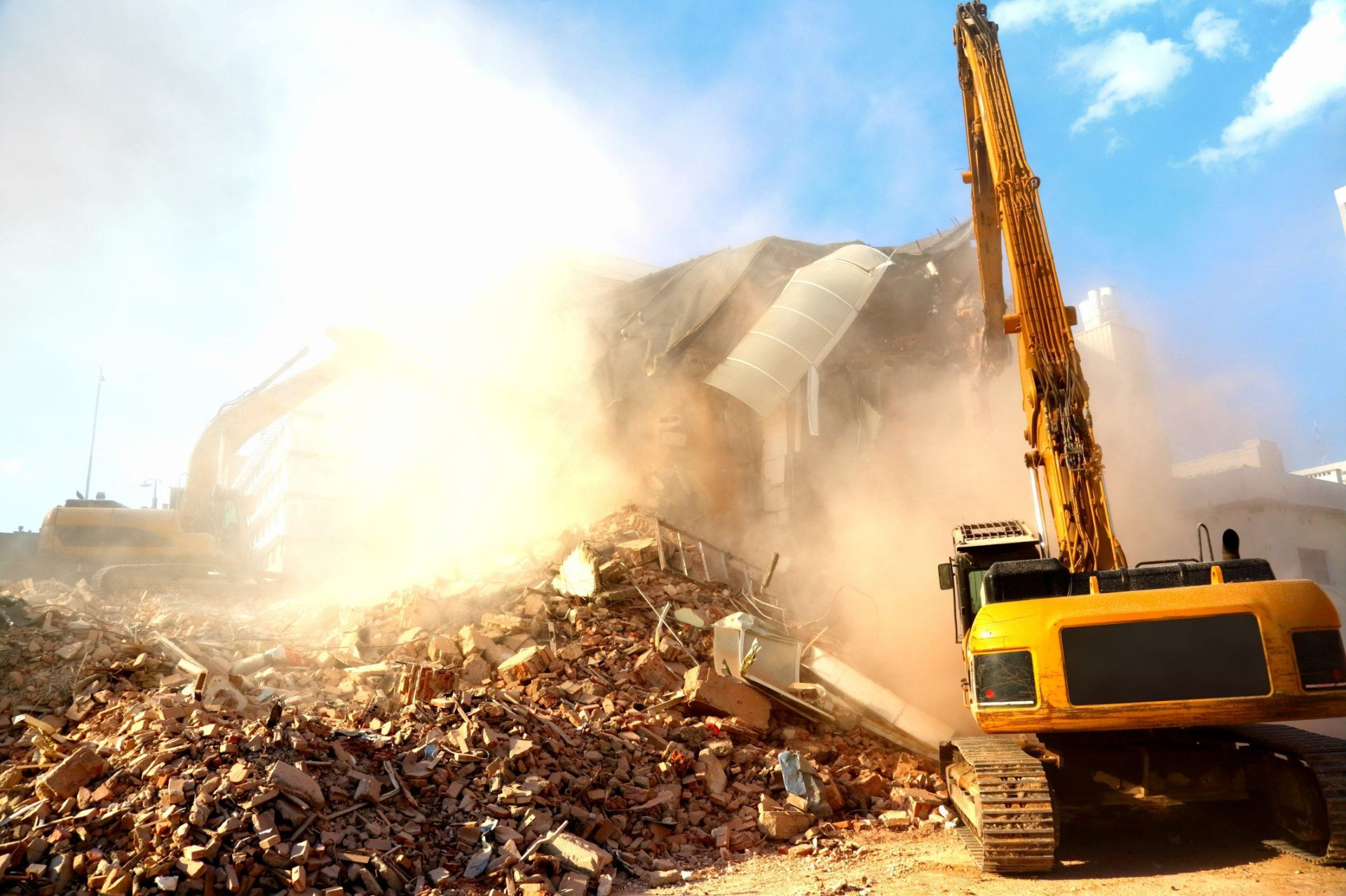
By Arliegh Boswell
•
24 Apr, 2022
A demolition project can be necessary to initiate your construction project. It is the quickest phase of any construction process and may require a few hours to complete. However, before using sledge hammers or heavy demolition machines, some things need consideration. Like any construction process, demolition also requires proper planning and approvals to ensure the safety of the place and people. Hiring a Licensed Contractor Whether it’s a single wall or the entire building, professionals can better handle any type of demolition work. DIY can be risky because you don’t know anything about the strength and stability of the structure. Hiring experts will ensure safety and efficiency. It will also quicker the process, saving your time and money. Demolition experts know all the guidelines and always work ethically while following the highest safety standards. Planning Approvals and Permits Your contractor will suggest if you need any planning approval for the demolition from local authorities. It depends on the location and size of the building. Every region has demolition guidelines and permits. Make sure you have done all these legal formalities before starting the process. Risk Assessment Just as the permits, assessing the risk of demolition on the surroundings is also important. Here, the specialists can help with detailed risk assessment and guidance to carry out demolition safely. A structure may have mold, rotten wood, lead paint, chemicals, roof tiles, wiring, unstable structure, and more. It is essential to inspect the whole structure and plan how to remove any significant threat from the site. Managing Asbestos Asbestos is very dangerous if not treated properly. Asbestos fibers can travel to the lungs causing life-threatening diseases. Only professionals know the right method. Therefore, hiring experts is crucial. Handling Neighbors When you have the permits and before you begin the process, inform your neighbors. They will be prepared for all the noise, dirt, and disturbance. Tell them in advance and give an estimated completion time with an assurance that all the hazardous waste will be treated properly. Disconnecting Existing Utilities Disconnect all utility services such as gas, electricity, water, sewage, and others before demolition. It will save everyone on-site from any possible risk. Clear Surrounding Areas Before beginning the demolition process, look around the surroundings for any trees that may hamper the machinery. From trees to animals, remove all from the space. Select Demolition Method Different projects need different methods. A small-scale project such as pedestrian access can be managed using the hand demolition process. However, you may need heavy machines such as swinging a ball on a crane, a wire rope, or a machine with hydraulic pushing for more complicated jobs. Sometimes explosives are also used. Recycling Plan Hauling the concrete into the trash is easier than throwing away the waste. As a building may have different materials, it is important to dispose of things responsibly. However, recycling can also be an option to manage the demolition waste. You may ask your contractor to manage or recycle the waste. Conclusion Demolition projects can be messy and tiring. It’s a dangerous job that requires a lot of skills and experience. Pros have in-depth experience in demolition projects . They can handle any kind of residential, commercial, or industrial project with ease.
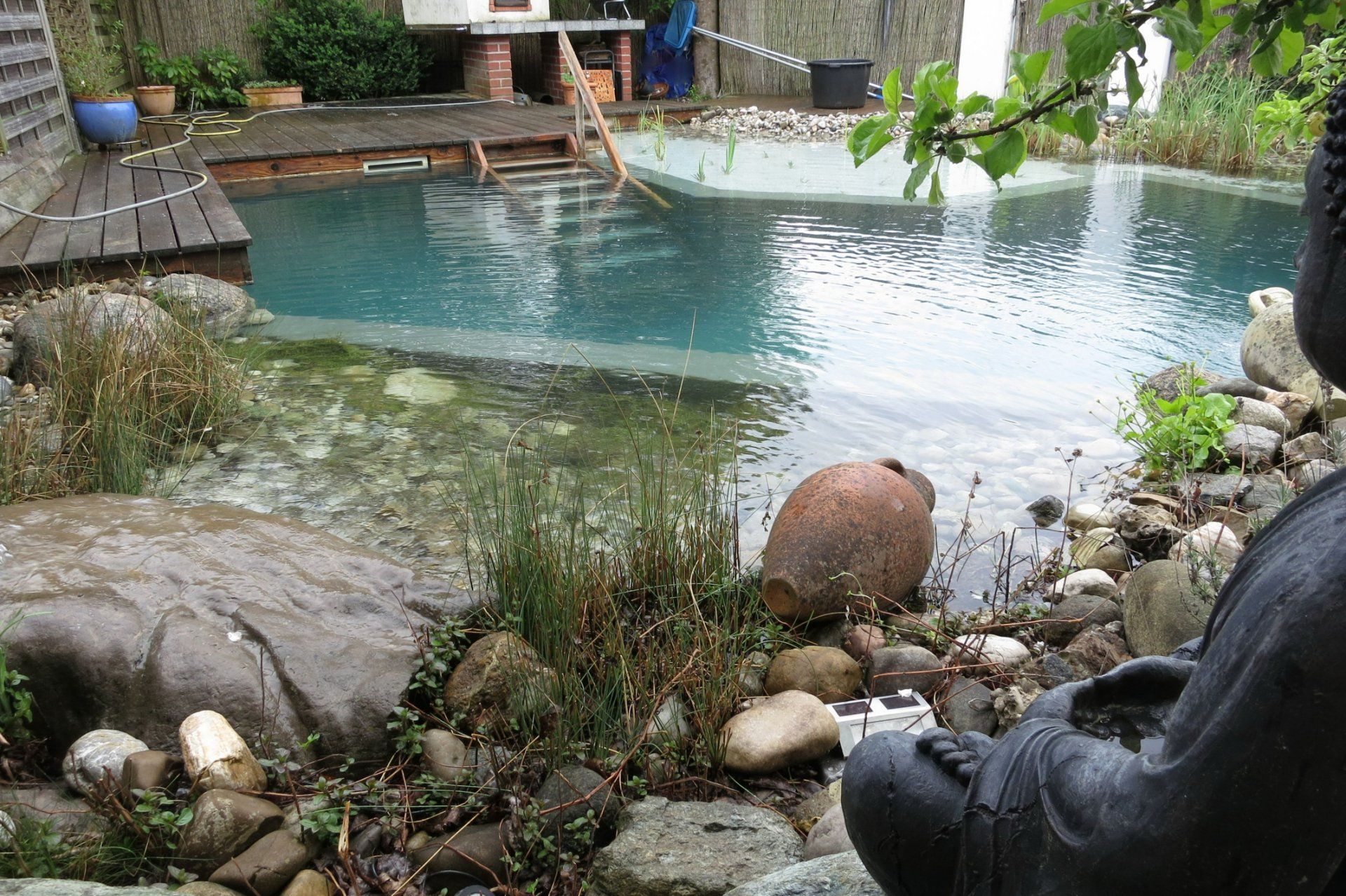
By Arliegh Boswell
•
27 Mar, 2022
A pond as a part of the landscape provides an aesthetically pleasing view, creates a tranquil and relaxing environment, attracts wildlife, and offers many ecological benefits. It makes the landscape more inviting for people to spend more time outdoors amidst natural surroundings. However, only constructing a pond is not enough. You also need to ensure it is properly maintained. Maintaining a backyard pond is not as difficult as it seems and comes with numerous benefits. Good pond health should remain a top priority for people having a pond on their property. Proper tools and correct information are vital to ensure a clean and well-maintained pond. Following a few simple steps regularly and sticking to a routine maintenance schedule will keep the pond looking healthy and great for years to come. What does pond maintenance involve? Usually, pond upkeep includes regular debris cleaning, removing algae and weeds, and maintaining the correct water level, temperature, and chemistry. It also involves managing surrounding plants, repairing issues timely, ensuring aeration, cleaning filters and pumps, removing dead plants, and cleaning waterfalls and fountains. Benefits of regular pond maintenance Pond maintenance is an ongoing process. Keeping up with the basic tasks keeps the pond looking and functioning its best. Here are a few reasons why regular pond maintenance is essential: Prevent algae growth Pond owners know that neglecting maintenance will allow the algae to quickly take over the pond, especially during certain parts of the year. While some algae types like plankton algae are vital to maintaining a pond ecosystem, others pose a severe threat to the pond's health. It leads to murky water that makes the pond look unsightly and depletes the concentration of oxygen in water, creating dead zones. Algae also limits the sunlight penetrating the pond. Regular monitoring and cleaning prevent algae from taking over the pond. Maintain pond’s pH level Every water body has its water chemistry. pH level affects the fishes and other aquatic life in the pond water. Too high or too low pH levels reduce fish’s ability to fight disease, metabolize food, and reproduce. Fish waste, chlorine, decaying plants, debris, fertilizers, and other factors can affect the pond water’s pH levels. Check the chemistry regularly and take steps to balance it. Aerating the pond to ensure enough dissolved oxygen or using probiotic treatments to ensure a good bacteria population in the pond is a part of regular pond maintenance. It helps maintain proper water chemistry and ensures the good health of the aquatic wildlife. Prevent water contamination Regular pond cleaning involves removing dirt, debris, sludge, and mud from the pond, using a skimmer, pond vacuum, and other equipment. Decayed leaves release toxic gasses which harm the pond’s ecological balance and contaminate the water. Debris can clog the Routine cleaning and maintenance of filters, lines, fountains, and pumps that prevent clogs and keeps these components working optimally. The process also involves taking steps to control ice in the winter season to protect the aquatics from danger. Regular maintenance keeps the pond water clear and hazard-free. Preserve plants and fishes Ponds have their unique ecosystem, and regular maintenance is beneficial in preserving them and ensuring a clean and healthy environment for their growth. Aeration provides enough oxygen to create a healthy environment for plants and animals. Maintaining the right temperature and water levels helps the aquatic animals and vegetation thrive. Devise a maintenance plan and schedule based on the type of fish and plants in the pond and keep the ecosystem in proper shape to prevent loss of life. Keep the pond looking attractive Another benefit of regular pond cleaning and maintenance is to keep the pond looking at its best. Including routine pond upkeep in your schedule will help you achieve the peaceful environment you look for outdoors. An inviting pond adds to the property value and enjoys all the benefits accompanying pond construction. Get in touch with a local pond maintenance company to ensure your pond remains in the best shape and gets the care it deserves. Professionals can remove aquatic weeds and pests that can leave the pond unusable.

By Arliegh Boswell
•
06 Feb, 2022
Mulch is a protective material layer applied to the soil surface. Mulching is one of the best ways to maintain a lush, healthy, and beautiful landscape and is suitable for all types of gardens. Mulch is an underrated gardening tool available in different varieties and can broadly be divided into organic and inorganic mulch. Organic mulch includes chopped leaves, grass clippings, paddy straw, sawdust, and hardwood chips. Inorganic or synthetic mulch consists of chips, recycled tires, pebbles, plastic, rubber mats, and crushed rock. It is essential to choose the mulch that best suits your garden needs. Though most people understand that mulch is vital to ensure a clean and manicured landscape, they are unaware of the host of other benefits that mulching offers. Let us look at the few benefits of using mulch in your garden: Controls weed growth Keeping weeds at bay is one of the biggest worries of gardeners. Weeds are an eyesore and prevent other plants from thriving by taking away water and essential nutrients from them. Strategic mulching is very beneficial in reducing weed growth. Mulch creates a natural barrier to block the sunlight from reaching the soil surface in places where weeds are likely to sprout. Weeds find it difficult to survive due to inadequate sunlight. Prevents soil erosion Bare soil is prone to get washed away due to heavy rains or constant treading on pathways. A layer of mulch protects the exposed soil from becoming compacted and prevents erosion. It acts as a barrier to protect the garden, minimize the impact of footsteps and rainfall, and prevent the soil nutrients from leaching out. Provides nutrition Mulch usually comprises decomposing organic and inorganic materials that break down eventually and provide the soil with much-needed nutrition. It keeps the soil surface soft, allows it to absorb water and airflow, and provides a healthy environment for trees, plants, and shrub growth. Retains adequate moisture levels Consistent, adequate moisture levels are vital for healthy plant growth. Laying mulch over the soil helps it retain moisture for a longer duration and prevent it from drying out quickly, especially during warm and humid days. Mulching reduces the need for frequent watering, saves time and effort, and promotes plant growth. Regulates soil temperature Temperature fluctuations are detrimental to plant and tree growth. With seasonal weather changes, the soil can get too hot or cold. Mulch maintains soil temperature and helps plants to survive temperature changes. It keeps the plant roots cooler in summers and prevents them from getting too cool in winters. Mulch protects roots from the harms caused by freezing and thawing cycles and frost-heaving. Acts as a pest deterrent Some types of mulch aid in pest control and repel fleas, ticks, and gnats. Mulching also increases the soil’s resistance to diseases. Organic mulch attracts plant-friendly bugs like earthworms, which improves aeration, and water retention. Provides a more attractive look Mulch can make the garden look visually inviting by adding beauty and depth. There are plenty of options to choose from in specific colors and textures for a stylish and unique appearance. Use inorganic mulch materials like decorative rocks to provide the yard with a whole new look. Other benefits of using mulch Reduces tree damage Increases soil fertility and improves structure. Provides shelter from mud Saves time Prevent dirt from settling on fruits, vegetables, and flowers Protects the soil from natural elements and lawn equipment Incorporating a few inches of mulch into the landscape adds beauty and provides the required nourishment. Cost, purpose, appearance, availability, application practicality, and personal preference usually determine the choice of mulch. Contact a local mulching company to know more about the benefits of mulching.
© 2024
Environmental Audit & Assessment, Inc.
